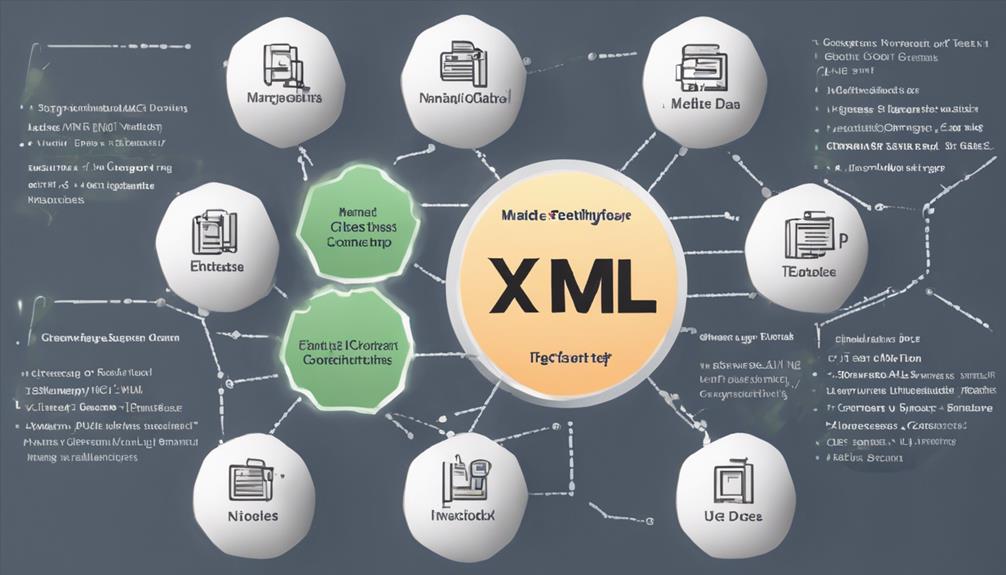When you integrate XML data formatting services with other systems, you must navigate a maze of complexities and interdependencies. Understanding how to seamlessly connect these systems can be the key to unlocking a world of streamlined operations and enhanced data processing capabilities. Starting with a strategic approach and meticulous planning, the journey towards seamless integration is both challenging and rewarding. So, are you ready to embark on this transformative journey of system interoperability and data exchange efficiency?
Understanding System Requirements
To implement XML data formatting services successfully, it is essential to first clearly understand the system requirements. System compatibility is crucial when integrating XML data formatting services with existing systems. Before proceeding, ensure that the systems involved can support XML data formatting and are capable of exchanging data in this format.
Data transformation plays a significant role in this process. You need to assess how data will be transformed from its current format to XML and vice versa. This involves mapping the data fields, ensuring that all necessary information is accurately captured and translated.
System requirements should detail the specific software versions, hardware capabilities, and network configurations needed for smooth integration. Understanding these requirements will help in planning the implementation effectively. It is vital to consider factors like security protocols, data storage capacities, and communication protocols to ensure a seamless integration process. By thoroughly comprehending the system requirements, you can lay a solid foundation for successfully integrating XML data formatting services with your existing systems.
Developing an Integration Plan
When developing an integration plan for XML data formatting services, the primary focus lies in structuring a detailed roadmap that outlines the steps needed to seamlessly incorporate this technology into your existing systems. An integration strategy must be devised to ensure the smooth assimilation of XML data formatting services with your current infrastructure. Data mapping plays a crucial role in this process, as it involves defining how data will flow between systems and ensuring compatibility between various services. It is essential to consider service compatibility to guarantee that the XML data formatting services align effectively with the other systems in use. Additionally, error handling mechanisms need to be established to address any issues that may arise during the integration process. By meticulously planning each step, including data mapping, service compatibility checks, and error handling protocols, you can create a robust integration plan that will seamlessly merge XML data formatting services with your existing systems.
Setting up Data Interfaces
With the focus now shifting to setting up data interfaces, the initial step involves defining the specific data sources and destinations that will be involved in the integration process. This is where the data mapping process comes into play. Data mapping is the process of linking data fields from a source to a target system, ensuring that the data is accurately transformed and transferred.
During the data mapping process, you will encounter integration challenges such as reconciling differences in data formats, dealing with varying data structures between systems, and handling data validation issues. These challenges require a meticulous approach to ensure that the data is mapped correctly and consistently across all systems involved in the integration.
To address integration challenges effectively, it is crucial to have a clear understanding of the data requirements of each system and establish robust data mapping rules. By meticulously defining and executing the data mapping process, you can ensure a seamless integration that enables smooth data flow between systems.
Testing the Integration
As you move forward from the data mapping phase, the next critical step is testing the integration. Integration testing ensures that the XML data formatting services seamlessly communicate with other systems. During this phase, focus on data validation to confirm that the data transferred between systems is accurate and consistent. Execute test cases to verify that the integration meets the specified requirements and functions correctly.
Additionally, performance monitoring is essential to assess how well the integrated systems perform under different conditions. Monitor response times, throughput, and resource usage to identify any bottlenecks or areas for improvement. Implement error handling mechanisms to gracefully manage unexpected scenarios such as data format mismatches or system failures. Validate that error messages are clear and informative for troubleshooting purposes.
Resolving Integration Issues
To effectively resolve integration issues, you must conduct a comprehensive analysis of the systems involved to identify the root causes of any discrepancies or malfunctions. Begin by validating the data exchanged between systems to ensure its accuracy and consistency. This can be achieved through automated data validation processes that check for conformity with predefined rules and standards. Additionally, implement robust error handling mechanisms to effectively manage and resolve any issues that may arise during the integration process.
Error handling involves the identification, logging, and appropriate resolution of errors encountered in the data exchange between systems. By establishing clear protocols for error detection and notification, you can streamline the troubleshooting process and minimize downtime. It is crucial to document common error scenarios and their resolutions to facilitate quicker problem-solving in the future. Regularly reviewing error logs and performance metrics can help you proactively address integration challenges and optimize system interoperability. By prioritizing data validation and error handling, you can enhance the efficiency and reliability of your integrated systems.
Frequently Asked Questions
How Can XML Data Formatting Services Improve Data Security Measures?
To enhance data security, XML data formatting services improve encryption methods, ensuring secure transmission and storage. By streamlining authentication processes, these services verify user identities, protecting against unauthorized access and safeguarding sensitive information within systems.
What Are the Common Challenges When Integrating XML Data With Legacy Systems?
When integrating XML data with legacy systems, you may face challenges like data mapping complexities and system compatibility issues. Ensure thorough testing and communication between teams to overcome these obstacles efficiently and effectively.
Are There Any Best Practices for Optimizing XML Data Transfer Speeds?
You want to squeeze every last drop of speed out of your XML transfers, right? For performance optimization, focus on reducing network latency. Streamline your data, cache intelligently, and consider compression techniques.
Can XML Data Formatting Services Handle Real-Time Data Synchronization?
Yes, XML data formatting services can handle real-time data synchronization efficiently. By integrating performance monitoring tools and robust data encryption techniques, you can ensure secure and seamless synchronization of real-time data across systems.
How Can XML Integration Impact Compliance With Data Privacy Regulations?
When integrating XML, ensure data encryption compliance with regulations. Manage consent effectively to align with privacy laws. XML data formatting services can enhance compliance by enabling secure data transfers and clear consent management processes.



